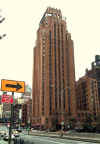 |
New York
Architecture Images- Midtown Beekman Tower formerly the Panhellenic Tower Landmark |
|
architect |
John Mead Howells |
|
location |
3 Mitchell Place/First Ave at East 49th St. |
|
date |
1927-1928 |
|
style |
Art Deco |
|
construction |
28-storey orange brick tower rises as a simplified shaft with deep-set, brick-spandreled columns of windows. The corners are chamfered and also have similar window openings. |
|
type |
Apartment Building hotel |
|
|
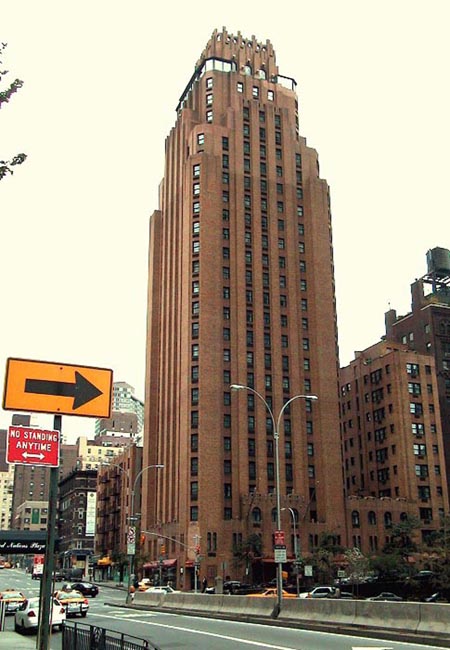 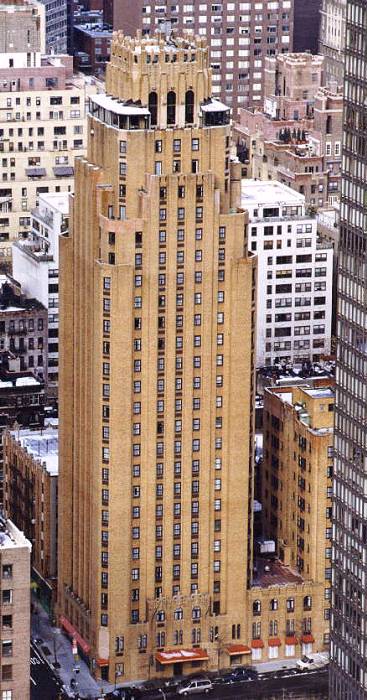 |
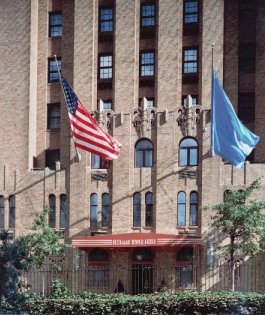 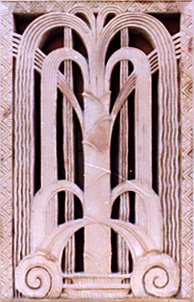 |
|
 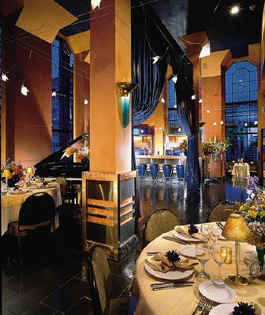 |
|
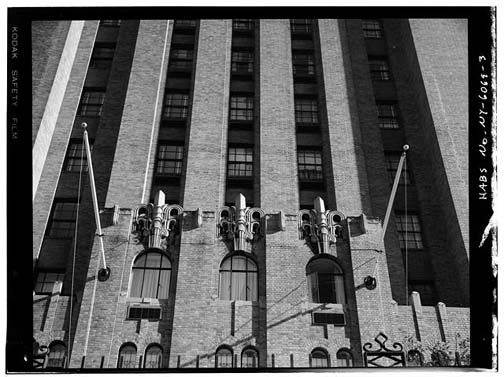 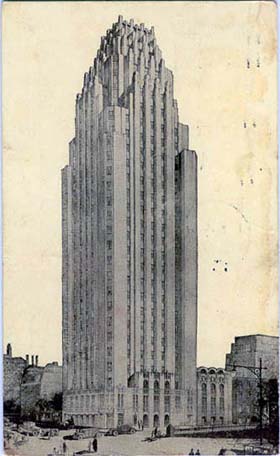 |
|
|
Prominently sited at the top of Beekman Hill, the
Panhellenic Tower (now the Beekman Tower Hotel) is one of the great Art
Deco skyscrapers in Midtown Manhattan. Erected in 1927-29 as a residence
and clubhouse for women belonging to national Greek-letter college
sororities, the Panhellenic Tower provided affordable housing for young
college-educated women who were entering the work force in record
numbers in the 1920s. Designed by the noted architect John Mead Howells,
this striking modernistic building features a square-plan twenty-six
story tower with chamfered corners and setbacks. The tower is renowned
for its dramatic volumetric massing and bold vertical striping created
by deeply recessed window-and-spandrel bays set between narrow piers
which rise unbroken from a two-story base to a parapet crown. Though
sparsely decorated, the building incorporates handsome Gothic-inspired
Art Deco ornament by the leading architectural sculptor Rene Chambellan.
Special thanks to www.nyc.gov Although the Panhellenic Tower was only a
twenty-three story, 380 room hotel, its brilliant design made it an
instant landmark. Howell's tower seemed to rise in one unbroken leap
from its three story base containing restaurants and lounges to become
one of the city's most vivid examples of vertical force. |
|